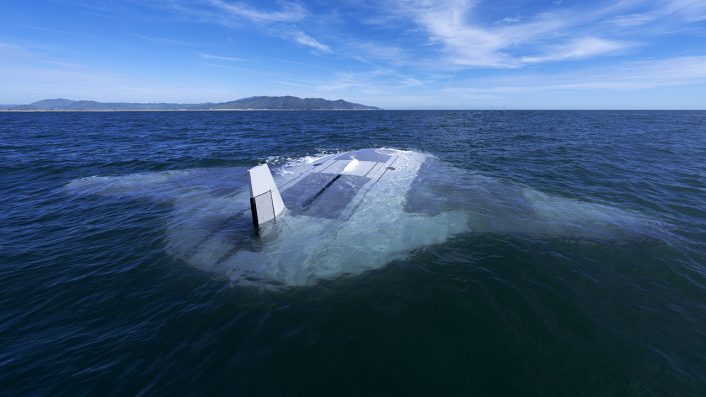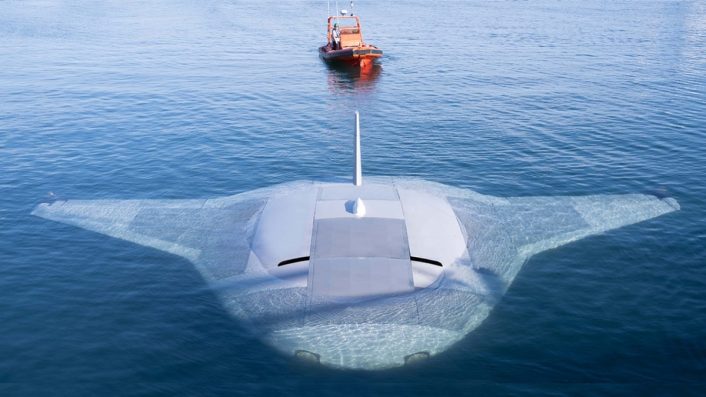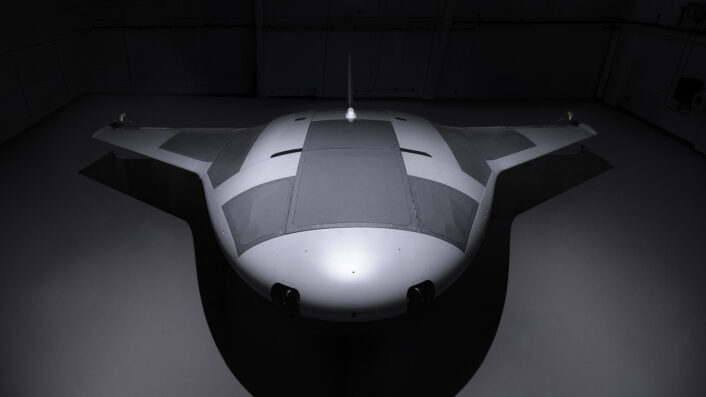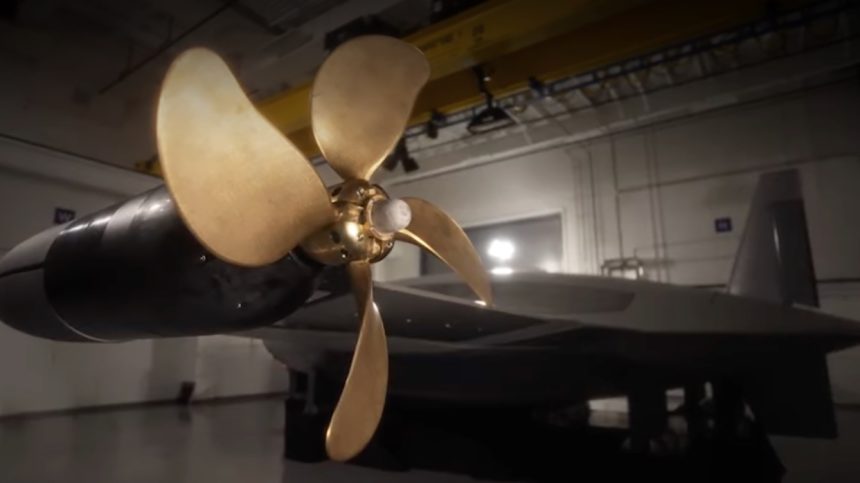Imagery released today by Northrop Grumman provides a close up view of one of the two rear propellers of the Manta Ray UUV (uncrewed underwater vehicle).
Just a few hours after a new 360° video of the in-water test campaign of Manta Ray being developed for DARPA (Defense Advanced Research Projects Agency) was published on Youtube, Northrop Grumman has released another pretty interesting clip.
The latest footage (that can’t be embedded here but can be found here) appears to focus on the design of the Manta Ray full-size uncrewed underwater vehicle (UUV) prototype, highlighting its current propulsion system and rear section; details which were more or less hidden, or shown submerged, until now.
An initial scene shows the Manta Ray in a controlled environment, possibly a lab or testing facility. The focus is on the sleek, futuristic design of the vehicle. A second segment, provides a close-up look at the Manta Ray’s propeller with four blades, highlighting its design and engineering details. This emphasizes the propulsion technology used in the test vehicle as of yet.
Remarkably, the video confirms that underwater drone is propelled via two rear propellers instead of four as the computer-generated footage of Manta Ray released in 2020 suggested.

The subsequent segment shows the Manta Ray UUV in action, either being deployed into water or already submerged, showcasing its operational capabilities in an aquatic environment. Following frames show the drone moving underwater, demonstrating its maneuverability and advanced autonomous features. The vehicle is shown navigating through water, possibly performing a task or demonstrating a specific functionality, such as data collection or reconnaissance.
The commentary highlights the characteristics of the extra-large glider designed to undertake extended-duration, long-range, and payload-capable undersea missions independently, without requiring on-site human logistics.
The Manta Ray prototype underwent extensive full-scale testing off the coast of Southern California in February and March 2024. DARPA, which released the first images of the prototype in the water, stated that this testing phase aimed to assess the vehicle’s hydrodynamic performance under real-world conditions.

The tests involved submerged operations using all propulsion and steering methods: buoyancy, propellers, and control surfaces. The video released yesterday highlights these operations, showing the prototype diving and resurfacing both statically and in motion.
It’s quite likely, the lessons learned from the testing campaign will be used to define the configurations that will make their way in to the Manta Ray UUVs.
The Manta Ray Program
The Manta Ray‘s development is part of a DARPA initiative to advance critical technologies for future unmanned underwater vehicle (UUV) designs. The program focuses on improving energy management, enhancing payload capacity, developing low-power propulsion systems, and other key areas to boost UUV capabilities.
Northrop Grumman states that Manta Ray will feature advanced command, control, and communications (C3) capabilities, allowing for extended-duration operations with minimal human intervention. The data collected by Manta Ray will enhance decision-making for joint forces, providing a strategic advantage in missions.

In 2021, Northrop Grumman received a Phase 2 contract to further the Manta Ray program, which began in 2020. Phase 2 involves developing full-scale demonstration vehicles by two prime contractors: Northrop Grumman Systems Corporation and Martin Defense Group. Each contractor is responsible for creating unique vehicles to showcase specific capabilities within the Manta Ray program.
As explained in our previous story on the UUV, the unveiling of the Manta Ray prototype fuelled speculation suggesting advanced underwater drones, like the giant one developed by Northrop Grumman, could potentially explain many sightings of unidentified submerged objects (USOs).









